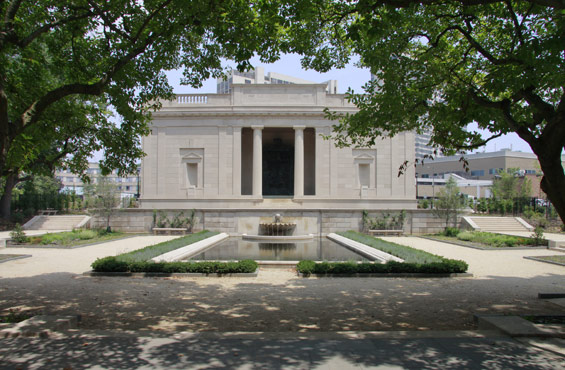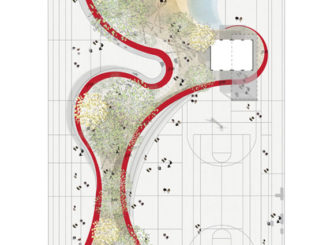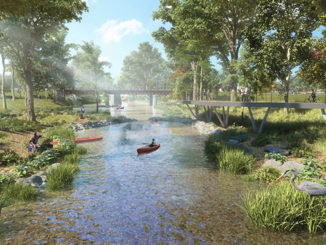OLIN has rejuvenated the garden landscape surrounding the Rodin Museum located on the Benjamin Franklin Parkway in Philadelphia. The rejuvenation of the site enhances and amplifies the original 1929 plans for the garden by architects Paul Cret and Jacques Gréber placing special focus on the relationship of the Rodin Museum to the Benjamin Franklin Parkway. The Rodin Museum garden rejuvenation project is a component of the Philadelphia Museum of Art’s Master Plan and a part of a larger project to re-imagine and renew the entire Benjamin Franklin Parkway as a preeminent artery for arts and culture. The rejuvenation project is the result of OLIN’s partnership with the Museum, The Pennsylvania Horticultural Society and Philadelphia’s Department of Parks and Recreation.
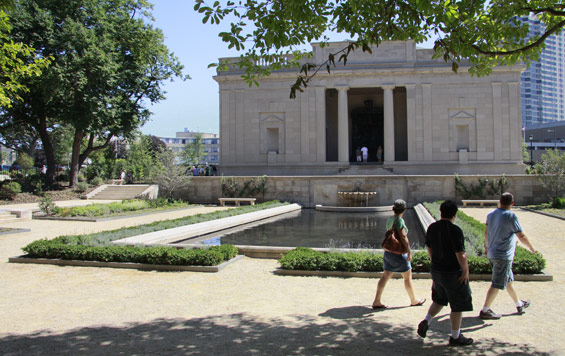
“Our goal in the design was to restore the symmetry of the formal French plan, but also to reunify the whole block as a Parkway garden,” explained OLIN partner Susan Weiler,” so what we have now achieved is a garden within a garden within a Parkway. We introduced more transparency throughout the site and accentuated the seasonality, so the garden is visually interesting all the time.”
Rejuvenating the entire site with new plantings and much-needed practical improvements, OLIN utilized Jacques Cret and Gréber’s devotion to formality. The garden’s parterres allow the eye to register the symmetry of the courtyard and the significant changes in elevation in the garden, allowing visitors to easily take in its many elements. Notes Susan Weiler, “As we were designing the garden, we didn’t see it as divided into sections. It’s all about movement through the entire space: up the stairs, through the gate, into the courtyard, up to the museum. Visitors can take in everything from the east and west gardens to the stairs to the parapet.”
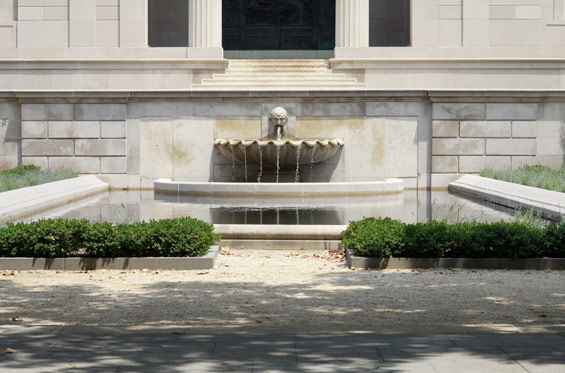
Work on the interior courtyard garden included repair of walls, stairs, and paving; planting of trees, shrubs, and perennials; selective removal or pruning of shrubs; a new irrigation system; and new lighting. Exterior landscape improvements involved restoration of lawns; planting of trees and groundcover; and installation of new pedestrian circulation, service stairs, walls, curbs, pathways, and a rear drive to increase accessibility throughout the site, as well as new site furnishings and pathway lighting. At the entry to the site, enhancements included improved drainage, planting of flowering shrubs and groundcover, and replacement of declining trees.
The outer areas of the garden create a vista to spotlight the courtyard and museum from the Parkway, with plantings that include native species used in the original design by Cret and Gréber, beneath a canopy of flowering trees. Within the courtyard, the formal perennial garden offers a variety of fragrances and displays, with the color and texture of the plants changing throughout the seasons.
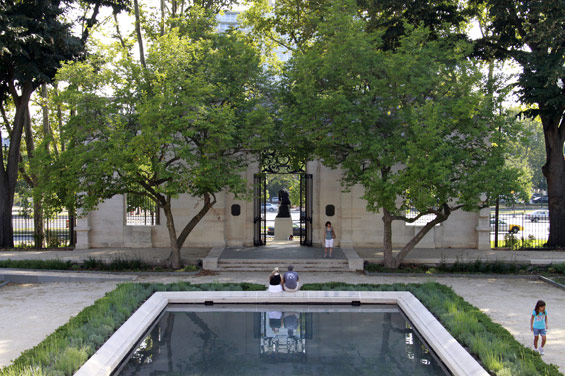
One of the most dramatic changes to the exterior is return of sculpture to the garden and the façade of the museum building. The Burghers of Calais now repositioned in the east garden from which it was removed in 1955. Two freestanding, life-sized bronzes, The Age of Bronze and Eve, will be placed in the niches of the museum façade, which were originally designed for them. Adam and The Shade will also find new homes in the garden. The presence of these five works with The Thinker at the Parkway entrance and The Gates of Hell at the doorway to the museum will allow the site to serve, as originally intended, as a frame for enjoying Rodin’s large-scale figurative sculptures.
OLIN’s design pays homage to the simplicity and complexity of both Gréber and Cret, who, according to Weiler, “understood the integration of architecture and landscape” as well as “boldness and detail,” as evidenced by Gréber‘s Parkway design as one grand gesture that utilizes repeating elements of small pools and hedges to define smaller spaces. “I appreciate the fact that they were trying to make Philadelphia the city it should be. They set the framework for the city. Now, it is coming to fruition.”
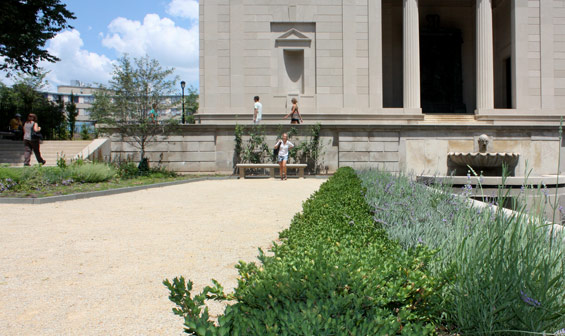
IMAGES: © OLIN

